IoT has ushered in a new era of smart devices that can communicate with each other, providing us with unprecedented convenience and efficiency in our daily lives. With IoT devices, we can control our home appliances, monitor our health, and track our fitness goals, among other things. However, with the increasing number of IoT devices, there is a need for effective monitoring and management to ensure their optimal performance. Thus, this article provides a detailed explanation of IoT monitoring. Also, we have collected ten good IoT monitoring tools for your reference.
What is IoT Monitoring?
IoT monitoring is an important process that involves continuously tracking IoT based monitoring devices and their associated data to ensure optimal performance and security. This is achieved through monitoring the device’s health, network connectivity, and data transmission. With the help of an IoT monitoring system, organizations can effectively monitor and analyze the data generated by IoT devices to identify any anomalies or potential security threats. Moreover, IoT monitoring open-source solutions such as Nagios, Zabbix, and PRTG can provide cost-effective monitoring solutions for organizations.
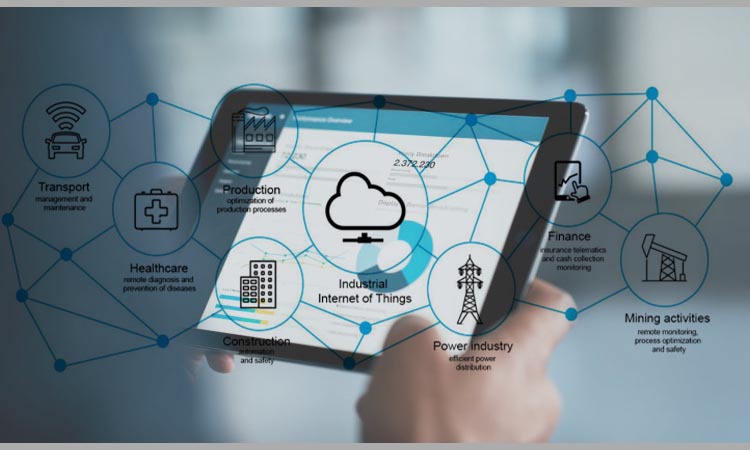
In addition, IoT-based air pollution monitoring systems and IoT-based agricultural monitoring systems are examples of how IoT technology is used to monitor and improve environmental conditions. These systems use IoT temperature monitoring systems and IoT air quality monitoring systems to collect and analyze data to provide insights into air quality and agricultural needs. With the help of these IoT monitoring systems, organizations can make data-driven decisions to improve environmental conditions and optimize agrarian yields.
Wearables and smart home products are our common IoT-related devices. There are many more categories on the Internet of Things. These include healthcare, retail, and supply chain monitoring systems. They are all related to IoT “things.” Most enterprises are gradually integrating such IoT-related devices into their IT strategic plans. According to Mckinsey’s research, the number of companies using IoT technology is increasing. It has increased from 13% in 2014 to 25% in 2019. The number of IoT devices is expected to grow to 43 billion worldwide in 2023.
People often refer to IoT devices as smart devices. Smart devices often have monitoring software built into them. The monitoring software ensures that the equipment consistently adheres to its performance metrics. It also oversees that it operates without exceeding performance thresholds. Monitoring software implementation is also effective in preventing cyber-criminals from causing damage.
Most enterprises have multiple IoT devices located far apart and in different locations. These IoT devices may vary in shape, size, function, and systems. To keep track of the status of these IoT infrastructures and troubleshoot individual devices. Enterprises must collect and analyze data on these devices. However, it is difficult for enterprises to act accordingly. Because this data may be generated by different hardware and software platforms, it isn’t easy to analyze uniformly.
The IoT monitoring system provides an effective analysis solution for smart devices. The system collects and normalizes this large amount of data in an automated and visual way. The processed data is displayed in visual charts for the organization to view. The data analyzed enables organizations to troubleshoot equipment effectively. It can determine the root cause of the problem. Finally, optimize and fix performance and issues. It ensures that the device provides maximum value to the organization and its customers.
What are the Benefits of IoT Monitoring?
IoT monitoring tools proactively analyzes data, tracks its performance, and helps companies troubleshoot. It monitors the operation and functionality of the device on a permanent and continuous basis. It also collects and analyzes relevant data and provides actionable insights to users. IoT based monitoring also provides some benefits for enterprises.
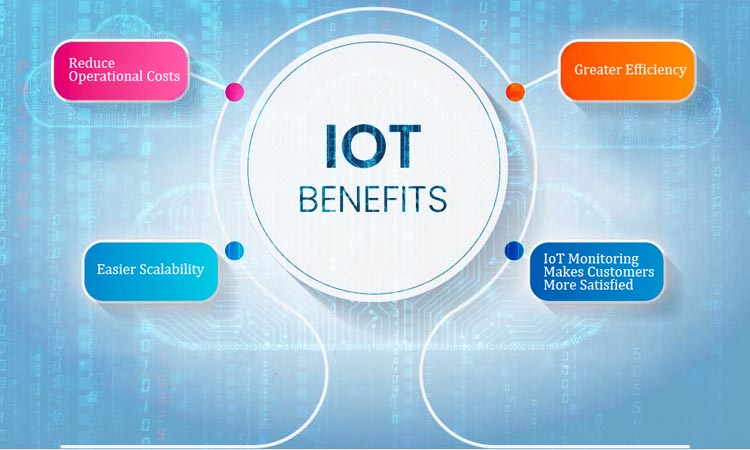
Reduce Operational Costs
IoT monitoring tools supports organizations in monitoring and managing their IoT infrastructure remotely. It also proactively identifies and resolves issues. It means it helps organizations eliminate expensive maintenance costs. It ensures that the software installed on IoT devices is automatically updated and always up-to-date. IoT monitoring software supports the automatic correction of software errors while patching vulnerabilities. It optimizes equipment performance and reduces the possibility of equipment failure. It provides an ideal solution for saving labor and cost.
Greater Efficiency
The simplification of processes allows companies to spend more time on more critical businesses. For example, developers can spend more time focusing on product innovation and developing new features.
Easier Scalability
IoT based Monitoring supports the IoT infrastructure to progress with the enterprise. It makes it easier to deploy and manage IoT devices. It also provides complete visibility for the entire device population. It makes it easy to find these IoT devices wherever they are located.
IoT Monitoring Makes Customers More Satisfied
IoT based Monitoring provides a way to manage IoT devices remotely. It will proactively track and manage the IoT devices in your organization. It will address performance and security issues affecting IoT devices before customers find out. IoT based monitoring also allows companies to focus more on their core business initiatives. For example, developing and implementing new product features creates a good response. It enables companies to get more positive feedback from customers.
Why is IoT Monitoring Important?
IoT monitoring refers to the process of collecting and analyzing data from IoT devices to ensure their proper functioning. It involves tracking the performance of IoT devices, identifying potential issues, and taking corrective actions to prevent downtime or other problems.
IoT-based monitoring can be done using various tools and techniques, including:
- Endpoint monitoring: This involves monitoring the devices connected to the network to ensure they function correctly.
- Network monitoring: This involves monitoring the network infrastructure to identify any issues that may affect the performance of IoT devices.
- Application monitoring: This involves monitoring the applications running on the IoT devices to ensure they perform as expected.
Getting Started with IoT Monitoring
Getting started with IoT monitoring can seem daunting, but it can be relatively straightforward with the right tools and approach. Here are some steps to consider:
- Define your monitoring goals: Before diving into IoT based monitoring, you should clearly understand what you want to achieve. What data do you want to collect? What are your key performance indicators (KPIs)? What do you want to achieve with the data you collect? A clear understanding of your monitoring goals will help you determine what data to collect and how to interpret it.
- Choose the right devices and sensors: Once you clearly understand your monitoring goals, you need to choose the right IoT devices and sensors to collect the data you need. There are many different IoT devices and sensors on the market, so be sure to choose those that are compatible with your monitoring platform and can provide the data you need.
- Select a monitoring platform: You will need a platform to collect, store and analyze the data from your IoT devices and sensors. Many platforms are available, both open source and commercial, so be sure to choose one that meets your data storage, analysis capabilities, and scalability needs.
- Install and configure your devices: Once you have chosen your devices and platform, you will need to install and configure your devices. This may involve wiring sensors, connecting devices to the network, and configuring settings.
- Test and validate your setup: Before deploying your IoT based monitoring solution, it’s important to test and validate your setup. This will help ensure that your devices are working correctly and that the data collected is accurate.
- Monitor and analyze your data: Once your IoT based monitoring solution is up and running, you can start to monitor and analyze your data. This will help you identify trends, patterns, and anomalies, which can help you make more informed decisions and take action where necessary.
IoT based monitoring requires careful planning, selecting devices and platforms, and proper testing and validation. With the right approach, IoT based monitoring can provide valuable insights and help drive better decision-making.
IoT Monitoring Solutions
Organizations looking for IoT monitoring solutions have a plethora of options to choose from, including commercial and open-source solutions. These solutions provide real-time monitoring, analytics, and visualization of IoT data. Some of the popular IoT-based monitoring solutions are:
- AWS IoT SiteWise: A fully-managed service that collects, structures, and searches IoT data.
- Azure IoT Central: A cloud-based solution that provides end-to-end IoT monitoring and management.
- Google Cloud IoT: A suite of tools that provides real-time monitoring and analytics of IoT data.
IoT Monitoring Tools
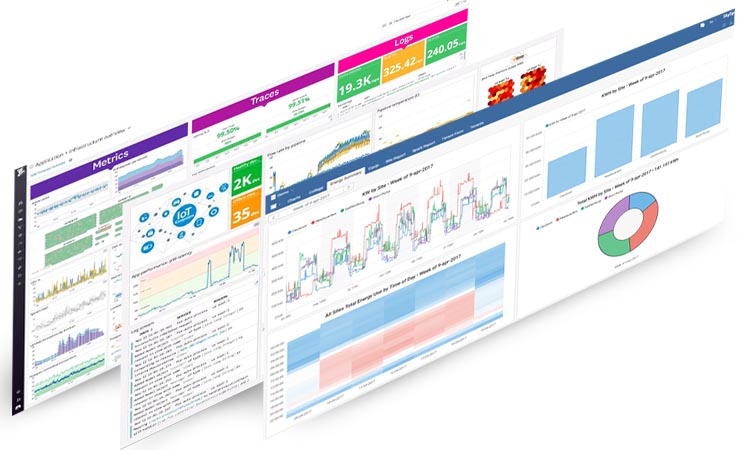
Hardware updates can easily cause IoT devices to have varying degrees of problems. At the same time, IoT based monitoring tools provide the perfect solution to this challenge. IoT monitoring software bridges sluggish devices such as transportation, power, and cooling. The tool also helps in bridging the gap between manufacturing hardware. IoT based monitoring tools also give companies greater insight into such equipment. Companies can understand critical information. Such as device temperature, location, and even which components are failing.
Some of the more common IoT monitoring tools:
- Skypark: A monitoring solution that can handle a wide range of data from IoT devices. It allows integration with any Java-enabled device. It allows you to keep track of a wide range of devices. It is suitable for businesses of all sizes.
- Senseye PdM – An IoT monitoring tool for factory floor equipment focused on IoT-driven manufacturing. It provides an effective IoT solution for industrial IoT based monitoring and management suites. It is suitable for factories with a large number of IoT devices.
- Datadog IoT Monitoring – An Industrial IoT monitoring and management platform. It is specially designed for the transportation and logistics industry. It provides data aggregation with maps and location-based data. It is suitable for large enterprises that are focused on monitoring logistics networks.
- Teamviewer IoT – A more comprehensive IoT solution. It integrates with ITSM solutions such as Salesforce. It supports processing various industrial domain data.
- Hologram IoT – a cellular-dependent IoT monitoring platform. Its monitoring capabilities revolve around the cellular side of things only. It is suitable for transportation and logistics. It is also suitable for use in industries where multiple IoT devices are distributed over long distances.
- OpenRemote – An open-source and completely free industrial IoT based monitoring tool. It provides the ability to create personalized dashboards of monitored data. This functionality is also combined with task automation and location tracking. It is probably the best choice for companies with limited budgets and the time and ability to develop the back end. Since the platform is built on Java, you will also need to understand the language.
- Particle – A cellular-based IoT solution. It can give the user more details regarding reporting and monitoring capabilities. Using this platform requires purchasing additional branded hardware. At the same time, it is integrated into enterprise IoT devices. It is similar to the Arduino kit but allows enterprises to update and remotely push to the devices used through the site.
- AWS IoT Device Management – One of AWS’s many IoT device management extensions. It allows integration into existing AWS setups with some simple installation and maintenance. It primarily relies on integrating IoT network management and execution tasks across AWS. It is suitable for enterprises already using the AWS platform and does not have high management tools requirements.
- Domotz: It offers quite an excellent feature set in IoT device management and monitoring. It also allows integration with ticketing systems to communicate with PSA services. It is ideal for hosting providers.
- MetricFire – An all-in-one application based on open-source server monitoring tools. It is also an infrastructure monitoring platform. It has both Graphite and Hosted Prometheus configurations. It also allows users to track real-time metrics through the Grafana dashboard.
Some Workplace Examples of IoT Monitoring
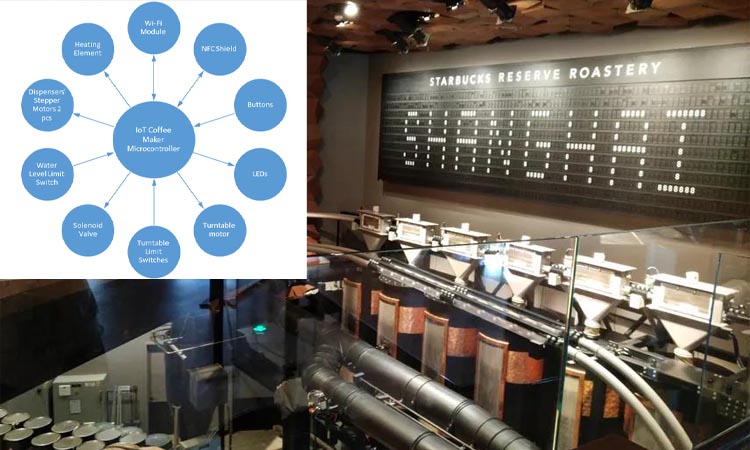
We can see that there are many examples of IoT based monitoring workplaces. They are all presented by combining with IoT devices. IoT devices include data security software, inventory management applications, and website traffic metrics. A typical example is an IoT device application for a coffee roasting lab. IoT based monitoring proactively notifies the coffee roasting lab when there is a shortage of products from a supplier. It also protects employees’ data in the database. The former monitors’ inventory through an inventory management application. The latter is escorted by cybersecurity software. Of course, these are the results of IoT devices and IoT monitoring complementing each other.
Possible Challenges for IoT Monitoring
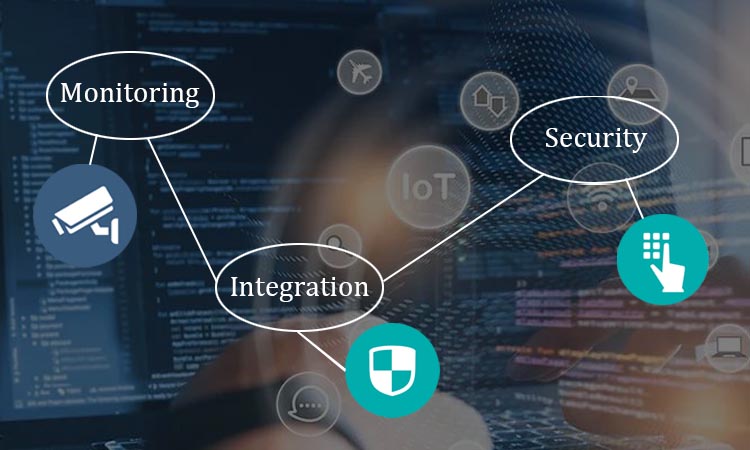
The defining characteristic of a connected device can be described as it containing a CPU and being linked to the internet. Linked internet is usually allowed to be private networks and another internet. Businesses can access IoT devices through them. Usually, each IoT device does not require its firmware to be upgraded by the user because IoT device vendors use the internet to automate this task.
However, you need to consider many important issues regarding some connected gadgets. Technologies that manufacturers can modify remotely are generally hacker friendly. But this is instead harmful to the user. All manufacturers use the default administrator username and password when installing firmware. They also use nearly the same credentials for all systems. It gives hackers an opportunity. If companies don’t change this when using IoT devices, cybercriminals will be able to steal your data easily. Companies also need to understand the following challenges they may face.
- Monitoring: We know from the preceding that the number of companies using IoT devices will increase. It means that enterprises will need to spend more money on IoT infrastructure. Enterprises will also need to allocate more time and effort to monitor the data.
- Security: As the number of IoT devices businesses use increases, security controls will be harder. A new IoT software or device means a new security responsibility for the enterprise. Cybercriminals can attack your IoT software or device to access your private data for criminal purposes. If businesses also need to consider investing in new IoT infrastructure. At the same time, the latest security monitoring software needs to be considered. Security monitoring software can protect a business’s smart devices from hackers.
- Integration: If the new IoT device functionality overlaps with your existing ones. You may need to reconfigure your system. Adding and integrating new devices into your existing systems can lead to certain problems. Those overlapping functions are useless to you and may also cause system confusion.
IoT monitoring is critical to your business. IoT devices are important assets for your business, and monitoring them is the same as securing them. This article has mentioned some good IoT device monitoring solutions on the market. I hope it can be helpful to you.







